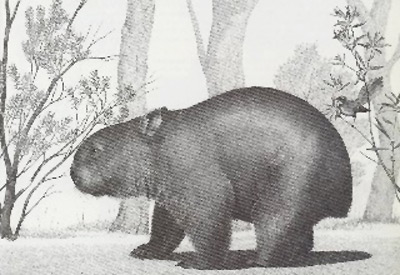
|
Search JoyZine with Google Site Search! |
Phascolonus gigas
Phascolonus was a genus of prehistoric Australian marsupial in the wombat family. The largest species, Phascolonus gigas, weighed as much as 200kg. Phascolonus existed alongside an even larger marsupial, Diprotodon, which weighed as much as two tons and was distantly related to wombats. Both disappeared at the end of the Late Pleistocene in a Quaternary extinction event, together with many other large Australian animals. At Tea Tree Cave a two-million-yea- old Phascolonus fossil was found alongside that of the crocodilian Quinkana. The availability of two skulls of Phascolonus gigas Owen, from Pleistocene deposits of Lake Callabonna, South Australia, allows characters from the basicranium to contribute to the phylogenetic resolution of the Vombatidae. In agreement with previous work, this study confirms that Phascolonus is a part of the clade containing the living hairy-nosed wombat, Lasiorhinus, and other large fossil wombats. Phascolonus retains some plesiomorphies seen only in the Miocene wombats (large, bilobed premolars) but also exhibits a number of autapomorphies of the skull and dentition, the most striking of which are the great breadth of the upper incisors, the peculiar arcuate ectotympanic, and the enclosure of the facial canal within the mastoid process of the periotic. |
